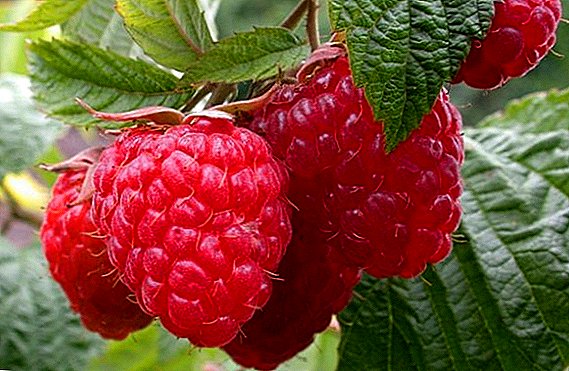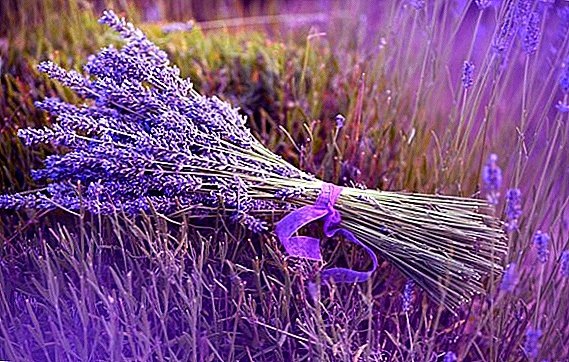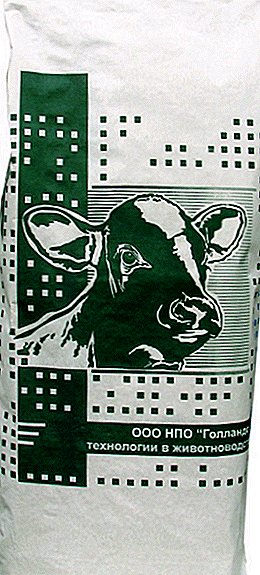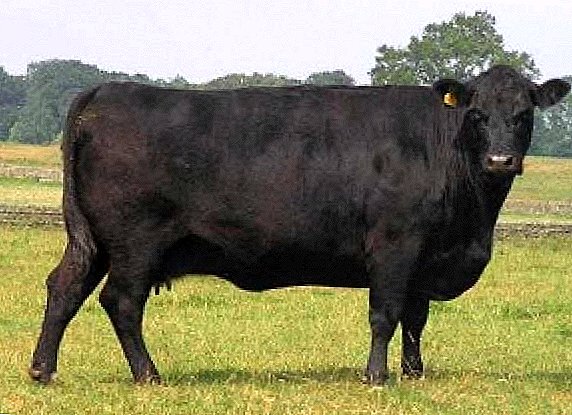 Duck meat is highly valued in cooking, due to its taste, nutrition and healthy properties. According to experts, boiled duck cleans the body from carcinogens, improves skin tone and skin structure, regulates metabolic processes, and also stimulates potency. That is why modern poultry farmers prefer duck breeds of meat (all the more so in terms of egg indicators, ducks are substantially less than those of laying hens). How to choose the best breed of meat direction, read on.
Duck meat is highly valued in cooking, due to its taste, nutrition and healthy properties. According to experts, boiled duck cleans the body from carcinogens, improves skin tone and skin structure, regulates metabolic processes, and also stimulates potency. That is why modern poultry farmers prefer duck breeds of meat (all the more so in terms of egg indicators, ducks are substantially less than those of laying hens). How to choose the best breed of meat direction, read on.
Distinctive features of duck meat breeds
A vivid characteristic of any broiler-type living creatures is the intensive growth and increase in body weight. Meat breeds are distinguished by fecundity and excellent health. And their sirloin is favorably distinguished by its juiciness, nutritional value and taste.
Important! The daily diet of a healthy bird should consist of 15% of protein foods of animal and vegetable origin, 45% of cereals, 20% of fresh greens and root vegetables, 3% of yeast, 1.5% of fish oil, 5% of hay flour.
To recognize the meat breed ducks, just look at their exterior. In representatives of this species is always more massive body with a well-developed muscular corset. And the weight of the average adult male and female ranges from 3.5-4 kg. It is characteristic that at 2 months of age the ducklings are already suitable for slaughter. 
Criteria for selecting ducks for meat
The success of fattening hybrid breeds in households depends largely on the quality of the selected for breeding birds. To be sure of the correctness of their preferences, experts advise to take into account the following qualities of ducklings:
- endurance regarding conditions and temperature;
- level of vitality;
- physical health and features of the body (you must immediately reject chicks with crooked legs, broken wings and deformities of the beaks);
- weight gain rate;
- nutritional value of meat (taking into account the fat contained in it);
- the amount of feed consumed;
- disease resistance;
- terms of puberty and fecundity;
- maternal instinct in hen;
- the safety of the herd;
- hatchability.

The best meat ducks
Breeding broiler ducks is a simple and very profitable business. But success in it largely depends on the genetic characteristics of the breed. Let us consider in more detail duck varieties of meat, which are especially popular with poultry farmers.
Important! In the first days of life, it makes sense for prophylactic purposes to give broiler ducklings the antibiotics Bacitracin and Grizin, which will help prevent possible diseases at the stage of immunity formation.
Black White-breasted
The breed was created by the breeders of the Ukrainian Poultry Institute when crossing Peking, Ukrainian White-breasted and Khaki Campbell ducks. Its distinguishing indicators are precocity, high-quality meat of high fat content and satisfactory egg production. 
Breed standard
Black white-breasted ducks stand out:
- tight, highly raised body;
- well developed wings;
- deep breasts;
- powerful black legs;
- stretched back;
- convex dark beak;
- big shiny eyes.
Description and performance
These birds very quickly gain weight, fully complying with the requirements of the meat type. By 2 months of age, the ducklings weigh about 1.5 kg, but the maximum weight of the females does not exceed 3.5 kg, and the males weigh 4 kg.  Representatives of the breed quickly reach puberty. Each duck gives about 130 eggs weighing up to 95 g. In addition, the breed is characterized by high vitality and good preservation of the herd (adult and young generation survives by 96%).
Representatives of the breed quickly reach puberty. Each duck gives about 130 eggs weighing up to 95 g. In addition, the breed is characterized by high vitality and good preservation of the herd (adult and young generation survives by 96%).
Important! When choosing ducklings, be sure to pay attention to their mobility, appetite and external signs of physiological health. In quality young animals drowsiness, lethargy, refusal to eat are unacceptable. Make sure your chicks have eyes and a cesspool. were clean.
The advantages and disadvantages of breeding
Among the advantages of the breed breeders distinguish:
- high meat and egg productivity;
- excellent meat quality (estimated by experienced chefs, it is the best among other meat breeds);
- omnivorous and undemanding to conditions of detention;
- early maturity;
- endurance and good safety of livestock.

Muscovy ducks
In everyday life, musk is more commonly known as indooot. It originated in the farms of South American Indians and eventually became desirable in all countries of the world. The name of the variety is due to the specific smell of carcasses.
Poultry breeders should familiarize themselves with the rules of breeding musk ducks, and in particular with the characteristics of the equipment for growing indouka and the rules of feeding musk ducks.
Breed standard
Variety is characterized by:
- long tail;
- short legs;
- large wings pressed tightly against the body;
- wide body;
- all sorts of color feathers.
 Black-and-white and brown individuals are more common, less often white and smoky with a pattern. Some experts discard colorful birds, considering only a monochromatic color to be a sign of pure blood.
Black-and-white and brown individuals are more common, less often white and smoky with a pattern. Some experts discard colorful birds, considering only a monochromatic color to be a sign of pure blood.Read also about when you can cut a meat ball for meat.
Description and performance
Learn musk ducks easily on a non-standard bright appearance. They are distinguished by a narrow and hook-shaped light beak, which, like the eyes, is framed with pink skin without feathers. Very often in these areas red warty growths are formed.  Red warty growths in musk ducks Fright and surprise in birds are always accompanied by a demonstration of a funny bristling tuft. A characteristic feature of the breed is hiss, which ducks emit instead of the typical quack, so they are also called "spike".
Red warty growths in musk ducks Fright and surprise in birds are always accompanied by a demonstration of a funny bristling tuft. A characteristic feature of the breed is hiss, which ducks emit instead of the typical quack, so they are also called "spike".
Independence in adulthood weighs about 6 kg, and 2-month-old ducklings - no more than 4 kg. Usually at this age they are sent to slaughter. The loin of carcasses has a delicate structure and low fat content. Experts attribute the meat to the category of dietary and note in it 85 percent of muscle mass. For the year, females bring no more than a hundred eggs, each of which weighs no more than 70 g.
Did you know? Wild ducks can live to their twenties.
The advantages and disadvantages of breeding
The positive qualities of musk are:
- well-developed maternal qualities in females (often poultry farmers use them to incubate chicken and goose eggs);
- calm temper;
- high vitality and independence;
- the land way of life (such pets may well be grown without a reservoir);
- little need for feed.
The disadvantage experienced owners call excessive thermophilicity feathered wards. This feature affects the safety of the herd and requires special conditions.
Video: Care and maintenance of musk ducks
Mulard
Recently, the poultry farm became more and more interested in this meat variety of ducks, which is due to the profitability of its industrial fattening. The hybrid was obtained by crossing musk, Peking, Rouen ducks and Orpington.
Breed standard
Distinctive features of the breed are:
- well developed muscular body;
- oblong back;
- pink-yellow short legs with rounded ridges;
- reddish beak;
- non-standard color.

Description and performance
Mulara grow quickly and are good chicks, but their eggs are barren. Therefore, the hybrid is considered to be one-season. For several months, the ducklings, even on ordinary grazing, have time to gain 3-3.5 kg of live weight, while adults can weigh up to 7 kg. The culinary experts especially appreciate the half-kilogram duck liver, which is a unique ingredient for the delicacy of foie gras.
Read more about the description of the duck breed Mulard.
The advantages and disadvantages of breeding
Among the advantages of this breed, experts call:
- high taste of meat and offal;
- aesthetic external signs of the exterior;
- early maturity;
- cleanliness;
- calm temper;
- moderate gluttony.
 And from the disadvantages noted:
And from the disadvantages noted:- sterility;
- strong domestic dependence on humans, which requires appropriate care and conditions for the herd.
Did you know? During seasonal flights, wild ducks rise to a height where a person cannot breathe without an oxygen mask. A sad fact entered the history when a US airliner collided with a flying duck wedge at a height of 10 kilometers from the surface of the earth.
Rouen Ducks
The first representatives of this breed appeared in the last century in the north of France. For the selection work were selected the best samples of birds tamed at that time. The result was a new generation of meat ducks with a tendency to obesity and excellent fillet flavor. 
Breed standard
The variety stands out:
- horizontally positioned torso;
- wide elongated back;
- deep breasts;
- small oval head;
- medium thick neck;
- short powerful paws of bright orange color;
- yellow-green or light brown beak;
- brown eyes.

Description and performance
These birds require a competent approach to nutrition, because they very quickly swim in fat. Therefore it is important from the very first days to take into account in the composition of the feed the amount of fats, proteins and carbohydrates. With a moderate diet, 2-month-old females weigh about 3.5 kg, and males - no more than 4 kg, but if you increase the nutrition, you can achieve a weight of 5.5 kg.
The breed is characterized by rapid weight gain. However, a large accumulation of fat affects fertilization of eggs. For a year, laying hens can collect up to 90 eggs weighing about 75 g. But most of them can be fruitless.
Did you know? Drakes do not know how to quack. Crying is peculiar only to females. In addition, ducks sounds do not have an echo.
The advantages and disadvantages of breeding
Judging by the reviews of breeders, this variety has many advantages, among which they note:
- high meat and satisfactory egg indicators;
- undemanding to conditions of detention;
- early maturity;
- omnivorous.
 But against the background of these positive qualities, there are also significant shortcomings of the Rouen ducks:
But against the background of these positive qualities, there are also significant shortcomings of the Rouen ducks:- a tendency to obesity;
- gluttony, which requires a special approach to the process of feeding and the choice of a nutritious diet;
- noisy;
- variegated color, which is why the carcass has a gray tint (it was this quality that caused the cheapness of Rouen duck meat and the mass abandonment of the industrial production of this variety).
Bashkir ducks
The variety was the fruit of breeding experiments of scientists of the Blagovarsky breeding plant. Its distinctive features are high meat and egg productivity and unpretentiousness in care.
Consider the characteristics of a Bashkir duck and also learn more about breeding Bashkir ducks at home.
Breed standard
Externally, representatives of Bashkir are characterized by
- massive powerful body;
- broad back with developed muscles;
- concave beak;
- flat head;
- wide-set orange paws.
 They have dark green or white-breasted plumage.
They have dark green or white-breasted plumage.Description and performance
Purebred ducks are a source of juicy tender meat with a specific pleasant taste. It has a high fat content. By the second month of life, the ducklings gain up to 3.5-4 kg of live weight. From one carcass the yield of meat products reaches 70%. In addition, hens per year produce about 230 eggs weighing up to 85 g. Their hatchability reaches 80%.
The advantages and disadvantages of breeding
Among the positive characteristics of this duck variety include:
- undemanding of the conditions of detention (Bashkir easily and quickly adapt to any environment and not choosy to feed);
- excellent meat and egg indicators;
- early maturity;
- resistance to low temperatures and typical diseases of poultry;
- high fertilization of eggs;
- good preservation of the herd.
 The disadvantage is perhaps the need for paddocks on water bodies, where the bird is quickly gaining weight.
The disadvantage is perhaps the need for paddocks on water bodies, where the bird is quickly gaining weight.Important! When keeping poultry, do not overcrowd the pen - in crowded places ducks gain weight poorly and often get sick. Therefore, count the area in such a way that no more than 16 ducklings under the age of 1 month can fit on 1 square meter. And in the future their number should be halved.
Gray Ukrainian ducks
This duck breed was born thanks to the efforts of specialists of the Ukrainian Research Institute of Poultry Borki State Farm. Today, she leads the list of popular varieties of meat direction. 
Breed standard
Expressive signs of purebred gray Ukrainian ducks are:
- wide muscular body;
- powerful addition;
- fragile backbone;
- thick plumage with a color resembling wild fellows;
- concave dark beak.
Important! Experts recommend to give ducks in the summer to 25% of the grain of the total feed composition. But in the cold season this term is increased to 50%. The rest is taken by potatoes, apples, cabbage and pumpkin.
Description and performance
This bird is favorably distinguished by its enviable endurance, cold resistance and unpretentious care. Ducklings grow rapidly and gain weight well. By 2 months of age they weigh about 3.5-4 kg. Laying for a year give up to 120 eggs with an average weight of 85-90 g. It is characteristic that gray ducks are able to fully develop on one grazing and independently obtained duckweed.  But for more intensive weight gain, it is important to introduce cereals and feed into their diets. At the same time there is no need for additional impurities and special feeds.
But for more intensive weight gain, it is important to introduce cereals and feed into their diets. At the same time there is no need for additional impurities and special feeds.
Experienced breeders say that the gray Ukrainian breed can winter well in unheated poultry houses. The main thing for its representatives is a thick layer of fresh bedding.
Read also about the pros and cons of a gray Ukrainian duck.
The advantages and disadvantages of breeding
The advantages of these ducks are obvious:
- good meat and egg productivity;
- high resistance to low temperatures and avian diseases;
- intensive growth;
- early maturity;
- omnivorous;
- high rates of preservation of young and mature livestock.
 The disadvantages include:
The disadvantages include:- untidiness of feathered wards;
- noisy.
Important! Domesticated ducks need to be let out for a walk even on cold winter days. But there should be no drafts in the house.
Moscow white ducks
Moscow white breed originates from the khaki Campbell and Peking ducks. It can be found in almost every agricultural compound of Russia. Poultry farmers speak well of meat performance and unpretentiousness wards.
Breed standard
Externally, birds are characterized by:
- white-cream color plumage;
- wide muscular body with a horizontal setting;
- rounded sternum;
- fragile elongated neck;
- big head;
- bright pink beak.
 Many experts are inclined to think that the presence of yellowness on feathers is a disqualification sign of pure blood.
Many experts are inclined to think that the presence of yellowness on feathers is a disqualification sign of pure blood.Description and performance
Moscow ducks are favorable indicators of meat and egg products. In adulthood, drakes weigh more than 4.5 kg, and females are only half a kilo behind in weight. During the year, the hens lay down more than 125 eggs with an average weight of 95 g. In addition, high egg production persists for many years. According to the breeders, the meat has a delicate structure, softness, juiciness and excellent taste.
The breed is characterized by rapid puberty, noisy and increased vital activity. Herd of any age category has excellent preservation (up to 97%). Often, ducklings are suitable for slaughtering at 60-65 days of life. 
The advantages and disadvantages of breeding
The benefits of keeping Moscow white ducks are as follows:
- high resistance to low temperatures;
- good immunity to common duck ailments;
- unpretentious diet;
- independence and life activity.
- great clamorousness;
- uncleanliness.
Did you know? Geese and ducks have a very complex genital structure. The penis of the drakes is characterized by a spiral shape and can be the size of the whole body. A similar design is inherent in the ovary of layers, and it is more sophisticated, the more complex the penis of the drake.
Blue Favorite
This breed in the meat direction appeared relatively recently. It is based on the genes of the white-breasted black, Peking and Bashkir ducks. As a result, breeders of the Blagovarsky breeding plant received a hardy, productive and early ripening bird. 
Breed standard
Purebred favorites are characterized by:
- elongated powerful body;
- deep sternum;
- medium elongated fragile neck;
- flat orange beak.
Description and performance
The authors of the breed set a goal to get highly productive ducks with good meat and egg qualities. At the same time, the incubation instinct was relegated to the last place. Thus, a new species inherited from the ancestors high vitality, independence in the extraction of feed and excellent fattening characteristics.  Nestlings on the 60th day of life weigh about 3 kg, and adults - within 4.5-5.5 kg. But the composition of fatty substances in duck fillets is much less in comparison with the Peking and Bashkir breeds.
Nestlings on the 60th day of life weigh about 3 kg, and adults - within 4.5-5.5 kg. But the composition of fatty substances in duck fillets is much less in comparison with the Peking and Bashkir breeds.
During the laying period, the female blows up to 150 eggs, each weighing up to 85 g.
The advantages and disadvantages of breeding
The positive sides of the cultivation of the representatives of the blue favorite include:
- high vitality;
- omnivorous;
- unpretentiousness;
- independence;
- cold resistance;
- strong immunity;
- good livestock safety;
- high productivity;
- early maturity;
- intensive growth.
 Among the shortcomings can be noted only the lack of maternal instinct in females.
Among the shortcomings can be noted only the lack of maternal instinct in females.Did you know? In some species of ducks and geese, the male and female form a constant pair, but the females are in danger of being "raped" by other males. In order not to display progeny from strangers, the cavity of the ovary of these birds can have several false pockets where unwanted semen is blocked.
Swedish blue ducks
At the beginning of the XIX century, the sinkers first learned about this breed, which is characterized by bright appearance and high productivity. It was bred by Swedish breeders and popularized by German farmers, who liked the fitness and endurance of birds.
Breed standard
The purity of ducks, according to the requirements of the standard, indicate:
- dense muscular body of massive size;
- flat sternum;
- oval head;
- flat beak;
- wide back;
- short tail;
- grayish black plumage.
 Experts say that pedigree individuals are distinguished by large single feathers of white color growing on their wings. At the same time, only the rarest specimens correspond exactly to the standards. Therefore, many farmers rank each duck with a bluish tinge of feathers to the Swedish blue breed.
Experts say that pedigree individuals are distinguished by large single feathers of white color growing on their wings. At the same time, only the rarest specimens correspond exactly to the standards. Therefore, many farmers rank each duck with a bluish tinge of feathers to the Swedish blue breed.Description and performance
For this variety, you do not need to create special conditions. Initially, it was reproduced in the harsh climatic latitudes, therefore it stands out among its fellows cold-resistance and strong immunity. In addition, it is easy to contact with a person and gives excellent indicators of productivity.
Did you know? Ducks are especially popular with the Chinese. Every year they grow more than 2 million birds, which is three quarters of world production.
Adults at 2 months of age weigh in the range of 3-4 kg. Females for the season demolish about 150 eggs weighing 75-80 g. They also differ in precocity and well-developed maternal instincts. Young animals are practically not ill and are characterized by good preservation, thanks to the genetic fund of the body's defenses. 
The advantages and disadvantages of breeding
Among the advantages of this breed are:
- ease of breeding, due to the rapid adaptation of chicks to any climate;
- unpretentiousness;
- omnivorous;
- high productivity;
- good instincts of chicks;
- trust in a person;
- excellent survival rate of young stock;
- early maturity;
- fruitfulness;
- aesthetic qualities of the appearance of ducks.
- voracity;
- uncleanliness;
- noisy

Beijing
This meat breed originates from the XVIII century, when the Chinese were actively searching for highly productive poultry. It should be noted that over the entire period of its existence, it has never disappointed the heads and is today the most common in the world.
Consider in more detail all the details of breeding Peking ducks at home.
Breed standard
Peking can be easily recognized by these features:
- elongated and slightly raised massive body;
- broad sternum;
- big head;
- thick neck;
- strongly convex forehead.
 They have very wide bright orange limbs, powerful wings with well-developed muscles, dark gray eyes with a specific luster, medium-sized bright beak and dense pure-white plumage.
They have very wide bright orange limbs, powerful wings with well-developed muscles, dark gray eyes with a specific luster, medium-sized bright beak and dense pure-white plumage.Important! Peking ducks are very sensitive to a sharp change in diet. In this case, the wards often have a sudden molt and a sharp drop in egg-laying.
Description and performance
Judging by the reviews of breeders, the bird is characterized by restless temper, increased noisy and excessive gluttony. These nuances are due to the mild excitability of the nervous system of the birds and the physiological characteristics of metabolic processes. Therefore, the poultry farmer must ensure that there is always food in the feeders. In general, about 340 g of feed is needed for each head per day.
The live weight of females is no more than 3.9 kg, and of drakes - 4.2 kg. At 23 weeks old, the hens begin to give eggs. For the year from one bird you can collect about 140 pieces with an average weight of 85 g. 
The advantages and disadvantages of breeding
The advantages of the breed are:
- good meat and egg indicators;
- resistance to diseases and adverse environmental factors;
- omnivorous;
- independence;
- increased vital activity.
Important! Dull lethargy and lifelessness can be caused by improper temperature conditions in the house.
The disadvantages include:
- poorly developed maternal instinct in hens;
- excessive fearfulness;
- irritable noise
- voracity.

Meat ducks: growing tips
To make breeding ducks profitable, the breeder should take care of the conditions of the wards in advance. Experts advise to provide for this purpose a spacious and dry room, where there is reliable ventilation.
Before settling the birds, the pen should be disinfected by whitewashing the walls and washing the floor with any cleaning agents. In addition, you should consider the level of illumination, as well as the mode of temperature and humidity. The optimal indicators for ducks of meat breeds are stable 23-24 ° С of heat, 65-70% humidity and the duration of daylight for at least 12 hours.
For young chicks, it is advisable to install round-the-clock heating lamps. Throughout the entire period of development of chicks, air exchange in the room is of considerable importance.
Experienced poultry farmers are advised to cover the floor with a 20-centimeter layer of straw or peat bedding, and under it, to prevent excessive moisture and to disinfect the air, pour lime lime at a rate of 0.5 kg per square meter. It is important to monitor the cleanliness of the room and to prevent the appearance of sour or putrid remnants of food in the feeders.  Straw laying for hens At 60-65 days of life, broiler ducks can be prepared for slaughter. It should be borne in mind that in birds, the period of juvenile molting begins, accompanied by the formation of "pads", which spoil the presentation of carcasses and promote weight loss.
Straw laying for hens At 60-65 days of life, broiler ducks can be prepared for slaughter. It should be borne in mind that in birds, the period of juvenile molting begins, accompanied by the formation of "pads", which spoil the presentation of carcasses and promote weight loss.
In addition to the outdoor method of growing meat breeds, many ducts prefer to save the cost of feed by the natural content of the wards. In such conditions, there must be a reservoir nearby. Although, according to experts, it is very difficult to get the necessary weight of chicks on pastures.
Did you know? During the Easter Uprising of 1916 during the Irish independence movement from Britain, part of the fighting took place in the central park of Dublin St. Stephens Green. Every day, the rebels and government forces staged a short-term cease-fire so that the park ranger could feed the ducks.
Whatever method of keeping the ducks you choose, a significant part of the success of their breeding depends on the characteristics of the breed. Considering them, you will be able to make the right choice and get high productivity from feathered wards.












